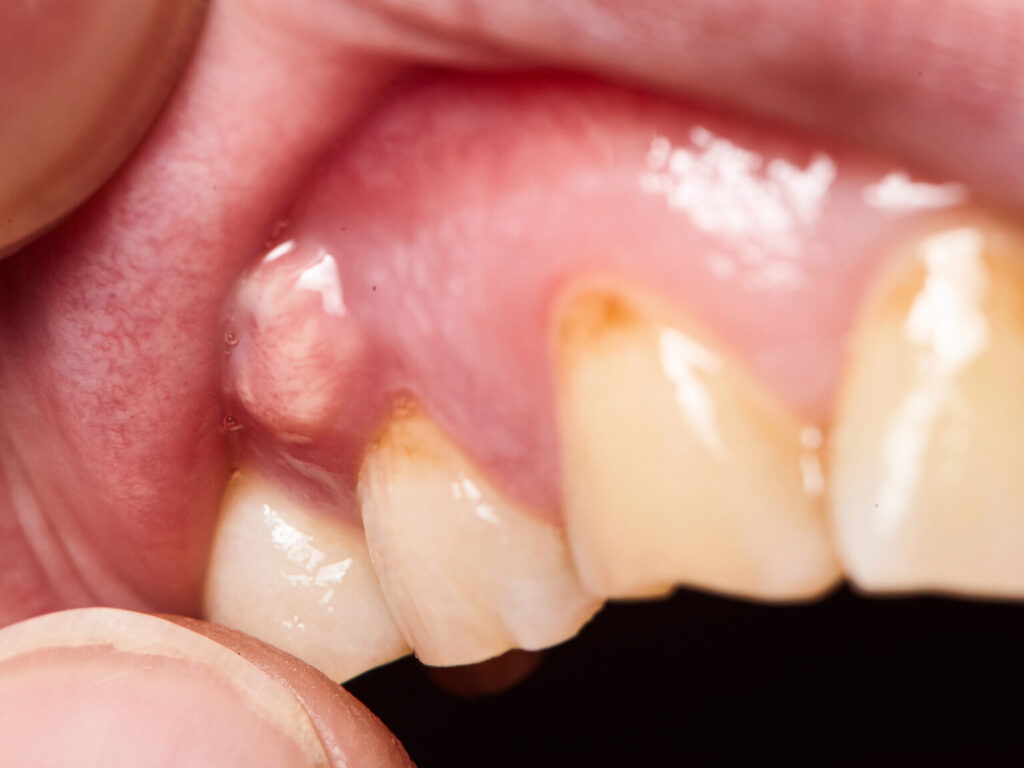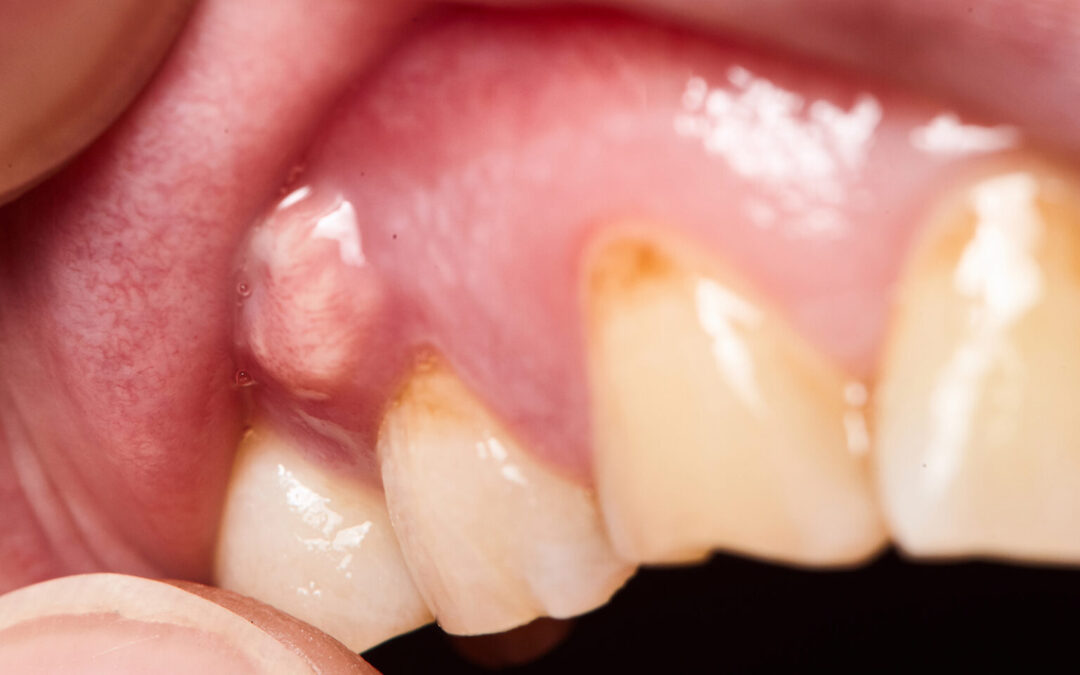
A dental abscess can be a serious and painful condition, one that requires immediate attention and informed action. It is a localized infection that typically occurs at the root of a tooth or in the surrounding gum tissue. If left untreated, an abscess can cause significant discomfort and even lead to more severe health issues. For individuals in Council Bluffs, IA, knowing how to recognize and respond to a dental abscess is crucial. This guide, provided by BlueJay Family Dental and Dr. Steven Fidone, outlines the essential facts about dental abscesses, what causes them, and how to respond safely and effectively.
What Is a Dental Abscess?
A dental abscess is a buildup of pus that forms in or around a tooth due to a bacterial infection. There are several types of dental abscesses, the most common being a periapical abscess, which occurs at the tip of the tooth root, and a periodontal abscess, which originates in the gums near the tooth. Both result from bacterial infiltration but stem from different causes within the oral environment.
The infection can develop when bacteria from plaque enter a damaged tooth or gum. This often happens through deep cavities, cracks, or trauma that allows bacteria to reach the pulp or soft inner tissue of the tooth. Once inside, bacteria multiply and cause the tissue to become inflamed and infected, eventually forming an abscess. Because the pus-filled pocket has no place to drain, pressure builds, resulting in intense pain and swelling.
Recognizing the Symptoms
Identifying a dental abscess early can be key to preventing complications. The most common symptom is a persistent, throbbing toothache that can radiate to the jaw, neck, or ear. This pain may intensify when lying down or chewing. Other signs include swelling in the face or cheek, sensitivity to hot and cold, and redness in the gums. A foul taste in the mouth or bad breath may also be present due to pus drainage.
In more severe cases, individuals may experience fever, swollen lymph nodes in the neck or jaw, or difficulty opening the mouth. Sometimes, a visible bump or pimple-like swelling appears on the gum, which may rupture and release pus. While this might provide temporary relief, it does not mean the infection has healed. All symptoms of an abscess, whether mild or severe, warrant professional evaluation to prevent the spread of infection and systemic complications.
Causes and Risk Factors
Dental abscesses are primarily caused by bacterial infection, but there are several contributing factors that increase the risk of developing one. Poor oral hygiene is one of the most significant risk factors. Inadequate brushing, flossing, and skipping regular dental cleanings can lead to plaque buildup, cavities, and gum disease—all of which provide a gateway for bacteria to invade deeper structures of the teeth.
Other risk factors include high sugar intake, which promotes bacterial growth; dry mouth, which limits the natural cleansing effect of saliva; and previous dental trauma that exposes the inner parts of the tooth. People with compromised immune systems, such as those with diabetes or undergoing cancer treatment, are also at higher risk. In some cases, failed dental work or cracked fillings can also allow bacteria to enter and fester beneath the surface.
Immediate Steps to Take if You Suspect an Abscess
If you believe you have a dental abscess, it’s essential to act quickly. Begin by rinsing your mouth gently with warm saltwater. This can help reduce bacteria and ease some discomfort. You can also apply a cold compress to the outside of your face to manage swelling and numb the pain. Over-the-counter pain relievers such as ibuprofen can help reduce inflammation and make the pain more manageable while you seek professional care.
Avoid applying heat or pressing on the swollen area, as this may worsen the inflammation or spread the infection. Do not attempt to drain the abscess yourself—this can introduce more bacteria and make the condition worse. Most importantly, contact a dental provider as soon as possible. Even if the pain subsides temporarily, the underlying infection must be properly treated to prevent long-term complications.
Why Prompt Treatment Is Essential
Unlike some dental issues that may resolve with time or self-care, a dental abscess will not go away on its own. Left untreated, the infection can spread to surrounding tissues, including the jawbone, neck, or even the bloodstream, potentially resulting in a life-threatening condition known as sepsis. Early treatment significantly reduces these risks and can help preserve the affected tooth.
In most cases, treatment involves draining the abscess to remove the infection and relieve pressure. Depending on the severity and location of the abscess, this might be followed by root canal therapy, a tooth extraction, or antibiotics to clear remaining bacteria. The treatment approach depends on several factors, including the health of the tooth and the stage of the infection. Prompt dental intervention not only prevents systemic issues but also minimizes pain and speeds up recovery.
Home Remedies for Managing Discomfort
While professional treatment is essential, certain home remedies can help manage symptoms while waiting for care. In addition to saltwater rinses and cold compresses, clove oil is a natural remedy known for its antibacterial and numbing properties. Applying diluted clove oil to the affected area may offer temporary pain relief.
Hydrogen peroxide diluted with water can also be used as a gentle rinse to help control bacteria, though it must be used carefully to avoid irritating sensitive tissues. Drinking plenty of fluids and maintaining a soft-food diet can also help avoid aggravating the area. It’s critical to remember that these are not cures but temporary measures meant to improve comfort and reduce bacterial load until professional treatment is received.
Complications from Untreated Abscesses
The risks of ignoring a dental abscess go far beyond tooth loss. One major concern is the spread of infection to other parts of the body. The maxillofacial region contains many pathways through which bacteria can travel to the brain, eyes, or heart, causing severe complications like brain abscesses, endocarditis, or cellulitis. These conditions are rare but can be life-threatening without timely treatment.
Chronic abscesses, even when not painful, can lead to jawbone loss, gum recession, and further decay of neighboring teeth. In children, untreated abscesses in baby teeth can affect the development of permanent teeth. Moreover, ongoing inflammation can weaken the immune system and contribute to other health conditions. This is why even mild dental infections should never be overlooked.
Preventing Future Abscesses
Prevention is always better than treatment when it comes to dental infections. The most effective way to prevent abscesses is to maintain consistent oral hygiene habits—brushing at least twice a day with fluoride toothpaste, flossing daily, and attending regular dental checkups. These routines help remove plaque and catch problems like cavities or gum disease before they escalate into serious infections.
In addition to hygiene, minimizing sugar intake and staying hydrated supports oral health. Using an antibacterial mouthwash can further reduce harmful bacteria in the mouth. If you’ve had dental work such as crowns or fillings, keep an eye on their condition and notify a dentist if they become loose or damaged. For individuals in Council Bluffs, IA, being proactive and informed about oral health is a key step toward avoiding future dental abscesses.
Conclusion
A dental abscess is a serious condition that requires immediate attention. Understanding the symptoms, causes, and proper steps to take can help prevent complications and promote recovery. While home remedies may offer temporary relief, they are no substitute for professional dental care. For those living in Council Bluffs, IA, being informed and taking prompt action can protect not just your oral health, but your overall well-being. With knowledge and timely care, dental abscesses can be effectively managed and prevented in the future.
Resources
Fouad, A. F. (2009). Endodontic microbiology and infection. Dental Clinics of North America.
Dar-Odeh, N. S., & Abu-Hammad, O. A. (2011). Antibiotic prescribing practices by dentists. Therapeutics and Clinical Risk Management.
Tugnait, A., & Clerehugh, V. (2001). Gingival recession—its significance and management. Journal of Dentistry.

